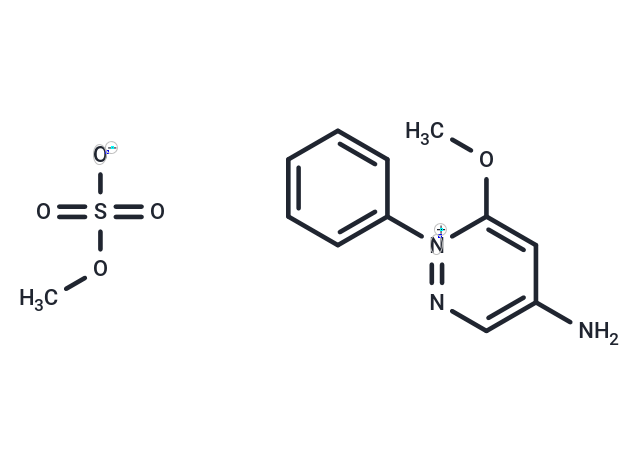Shopping Cart
Remove All Your shopping cart is currently empty
Your shopping cart is currently empty
Amezinium methylsulfate (Lu-1631) has multiple mechanisms, including stimulation of alpha and beta-1 receptors and inhibition of noradrenaline and tyramine uptake.

| Pack Size | Price | USA Warehouse | Global Warehouse | Quantity |
|---|---|---|---|---|
| 100 mg | $48 | In Stock | In Stock | |
| 1 mL x 10 mM (in DMSO) | $50 | In Stock | In Stock |
| Description | Amezinium methylsulfate (Lu-1631) has multiple mechanisms, including stimulation of alpha and beta-1 receptors and inhibition of noradrenaline and tyramine uptake. |
| In vivo | In 5 patients with multiple system atrophy, administration of 15 mg/day of amezinium metilsulfate, an adrenergic agent, during 6 months for the treatment of postural hypotension exacerbated post-micturition residuals as compared to that before treatment (178 ml versus 113 ml for a change of 37 %) [1]. The reduction ratio of FTBF was significantly increased by amezimium [placebo, 75.9%; amezinium, 85.1%; midodrine, 78.1%]. The infusion rate of noradrenaline producing a half-maximum venoconstriction was significantly decreased by amezinium (placebo, 40.6 ng/min; amezinium, 21.0 ng/min) [2]. |
| Synonyms | Lu-1631, Amezinium metilsulfate, Amezinium (methylsulfate) |
| Molecular Weight | 313.33 |
| Formula | C12H15N3O5S |
| Cas No. | 30578-37-1 |
| Smiles | COS([O-])(=O)=O.COc1cc(N)cn[n+]1-c1ccccc1 |
| Relative Density. | no data available |
| Color | White |
| Appearance | Solid |
| Storage | store at low temperature | Powder: -20°C for 3 years | In solvent: -80°C for 1 year | Shipping with blue ice/Shipping at ambient temperature. | |||||||||||||||||||||||||||||||||||
| Solubility Information | DMSO: 50 mg/mL (159.58 mM), Sonication is recommended. | |||||||||||||||||||||||||||||||||||
Solution Preparation Table | ||||||||||||||||||||||||||||||||||||
DMSO
| ||||||||||||||||||||||||||||||||||||
| Size | Quantity | Unit Price | Amount | Operation |
|---|

Copyright © 2015-2025 TargetMol Chemicals Inc. All Rights Reserved.